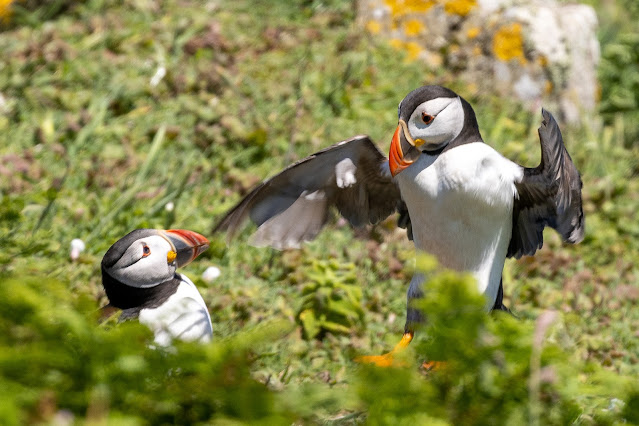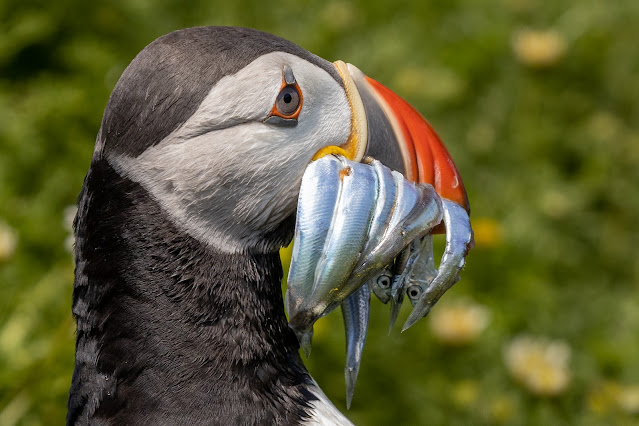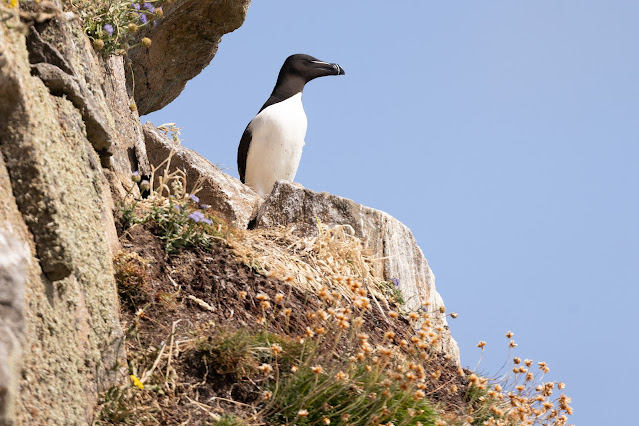I first went to Skomer off the Pembrokeshire coast about 15 years ago with two work colleagues. It has now become an annual pilgrimage. The attraction is the breeding colony of around 40,000 puffins on a small island only a short trip off the Welsh coast. From mid-May through to late July you are surrounded by them as they walk between your feet.
This year we stayed locally so had a very relaxed morning before going down to Martin's Haven to meet our boat. It was a bit choppy on the way across but despite an overnight weather advisory we completed the short trip and were greeted by hundreds of puffins, guillemots and razorbills in the small harbour.
You have about 4 hours on the island to walk around which is ample to cover most of the areas of interest. It is a pretty flat island with small cliffs bordering the coast and an internal area covered in grass, wildflowers and a small swampy area.
What you do notice are the puffins, absolutely everywhere. There are two or three hotspot areas for them where you can stand and study them. They nest in burrows but a lot of the adults when not out fishing are seen mooching around on the grass or apparently having meetings!
What everyone is looking out for are the returning birds with their beaks draped with sandeels.
Puffins aren't the only iconic species of the island. Choughs are found on the seaward coast, probing the cliff tops for bugs.
There are also large numbers of guillemots and razorbills but they tend to be on there rockier coasts. Some come close enough for a photograph though!
Finally we had to drag ourselves away from this magical place. It so good to see a success story where nature is thriving and you can share to with them. The wardens work very hard to keep the island as pristine as possible and it really shows. I'm sure that next June we will be back!!














































No comments:
Post a Comment